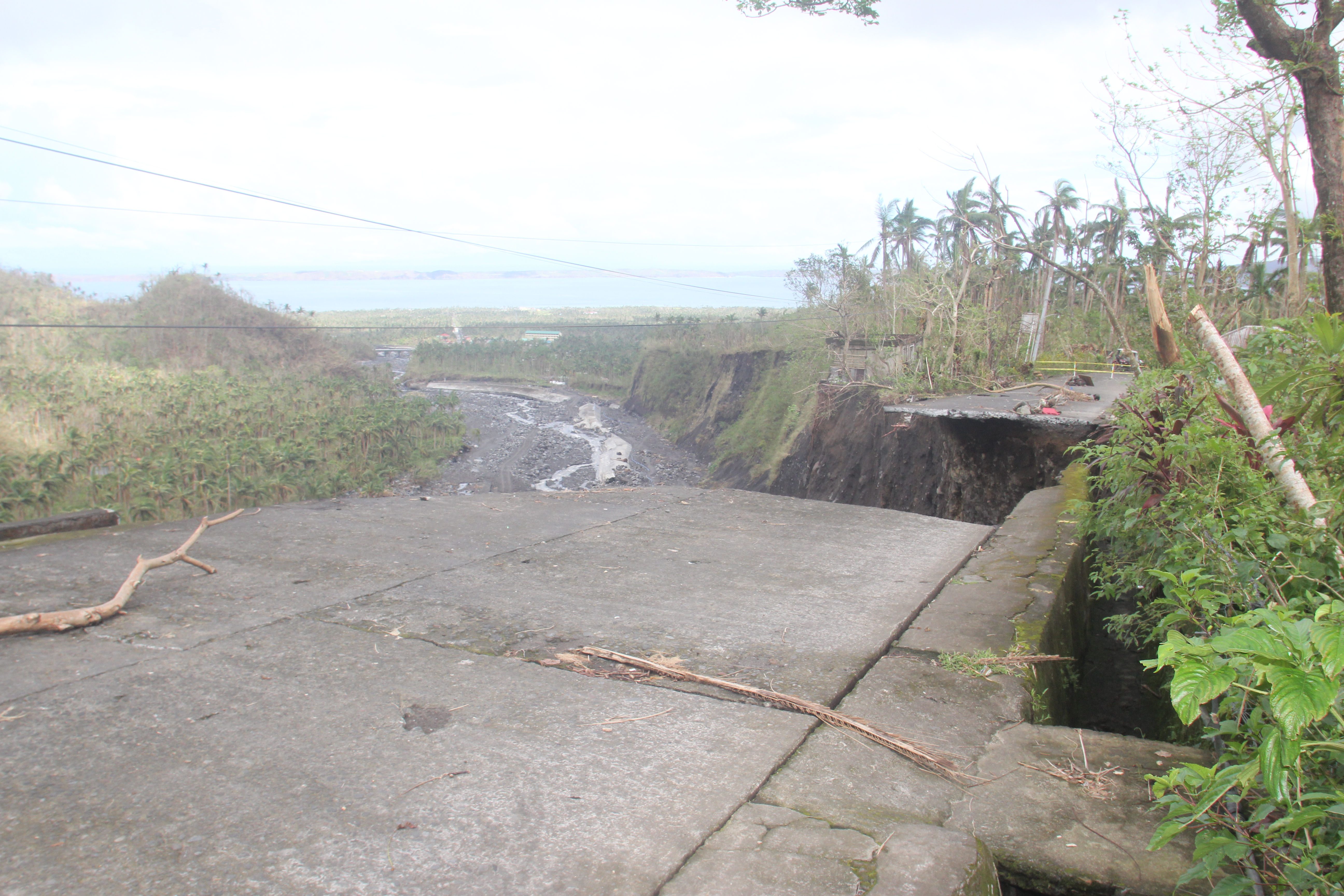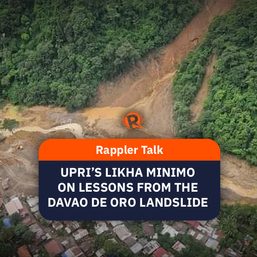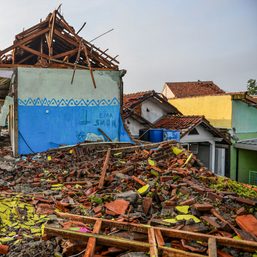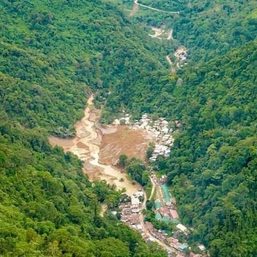SUMMARY
This is AI generated summarization, which may have errors. For context, always refer to the full article.

Milagros Buates, a mother of 8, patiently stood in line to get a sack of rice, eggs, bottled water, and pandesal from Kusog Bikolandia which had relief efforts in San Roque village, Malilipot town in Albay on Thursday, November 19.
The family of the 52-year-old is among the 70 families currently housed at the San Roque Elementary School in Malilipot.
The pakaplog – pandesal, kape (coffee), and itlog (egg) – for evacuees was initiated by Kusog Bikolandia, a regional political party formed in 2018, which is led by Noel de Luna.
The area in San Roque village where the homes of the displaced families are built had been declared as no man’s land after their land eroded due to a series of strong typhoons that recently battered Albay.
After receiving her relief goods, Buates kept her share in their room at their temporary shelter. She headed back to the no man’s land area to check her home, built within a hectare of land she and her two other siblings inherited from their parents.

Buates’ home is situated in front of the provincial road, where a fissure of more than 100 feet deep formed. Buates’ home and her store, built along the road that connects the village of Calbayog, was cut off completely after a number of typhoons battered Bicol.
A succession of typhoons hit Albay in a span of 3 weeks, creating the fissure as volcanic materials tumbled down the Bulawan River during Super Typhoon Rolly. The fissure resulted in soil erosion, endangering 65 families or 261 people, across Purok 1 and Purok 5.
Buates said all 8 of her children grew up in the house that they have to abandon.
“I got married at 14 to my husband Romeo, [who is] 10 years older. He is now 62, and it is difficult for us to build a new home now considering our source of income is gone,” she told Rappler.
“We don’t know where the government will relocate us, or if the place is as big as our own area. We will be leaving the land purchased by our late parents, which served as precious memories for us all. It’s hard but we need to leave for our safety,” Buates said.
She said she still goes home every day to cook food and bathe as the evacuation center has no water. This is expected to be her routine until the government provides her with housing.
Inside their home is an image of Our Lady of Manaoag which has been in her care for 15 years now. It serves as the protector and guardian of their home while they are staying at the temporary shelter.
Under threat
Malilipot Mayor Roli Volante said there is an ongoing negotiation with land owners for the purchase of a resettlement site. Volante is asking the NHA to expedite the construction of housing for 102 affected families.
“Our constituents are not only threatened by mudflow, but also of massive soil erosion after a road opening project was done by the Department of Public Works and Highway at Mounts Bulucawan and Tuktukan,” Volante told Rappler.
“The road opening of DPWH within the Dos Montes connecting Canaway from San Roque continuously erodes and this is dangerous as big fissure and the Dos Montes are both eroding. This is threatening our town,” he added.
San Roque village has a population of 2,277 based on the 2015 census. Initially, 65 families needed to be relocated but after an assessment of the Mines and Geoscience Bureau (MGB), the number of families to be relocated increased, according to village chairwoman Josefina Vinas.
Out of 686 families, 102 are staying at the temporary shelter at San Roque Elementary School. These 102 families are within 50 meters of the road that has been caving in gradually since 2015.
Vinas appealed to the National Housing Authority (NHA) to provide housing for the affected families at the soonest possible time. She also asked for hygiene kits and food for her constituents as their major source of income and livelihood, abaca, was destroyed by typhoons.
Cedric Daep, Albay Public Safety and Emergency Management Office (APSEMO) chief, said the wall of the cliff in San Roque is a mixture of sand and soil that could easily loosen and cave in should there be more flooding.
Daep said the identified familied need to be relocated completely to avoid untoward incidents. – Rappler.com
Add a comment
How does this make you feel?





There are no comments yet. Add your comment to start the conversation.